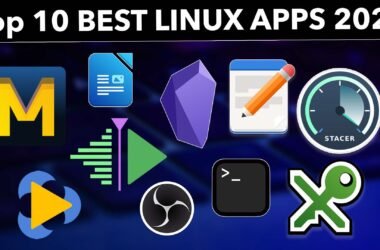If you’ve recently installed Debian 12 on your computer and are unsure about what to do next, this article is here to guide you through the essential post-installation setup. In this beginner’s guide, we will explore the top tasks you must complete after installing Debian Linux in 2023. By following these steps, you can optimize your Debian system and enhance its functionality, security, and user experience.
Adding a User to the Sudoers List
- Open terminal, Log in as the root user using the command “su” and entering the root password that you set during the installation
- Open the sudoers file by typing “nano /etc/sudoers“.
- Scroll to the end of the file and add a line with your username next to the root user.
USER_NAME ALL=(ALL:ALL) ALL
- Save the changes by pressing Ctrl + O and exit by pressing Ctrl + X.
- Type “exit” to return to your user account. You should now be able to use the “sudo” command.
Fixing CDRom Repo Error
If you installed Debian 12 using the DVD ISO, you may encounter a “repository cdrom does not have a release file” error. To resolve this issue:
- Edit the apt source list using the command “sudo nano /etc/apt/sources.list”.
- Look for the CD Rom repository entry and add a “#” at the beginning of the line to comment it out.
- Save the changes and run the below command to resolve the error.
- sudo apt update && sudo apt upgrade
Adding Contrib and Non-Free Repositories
The contrib and non-free repositories contain valuable packages not found in the default Debian repositories. To add them to your system, open terminal and type below commands:
sudo add-apt-repository contribsudo add-apt-repository non-freeSave the changes and update the source list by running:
sudo apt updateSetting up Nvidia Drivers
If your system has an NVIDIA graphics card, installing the appropriate drivers is recommended. Follow these steps:
sudo apt install nvidia-detectsudo apt install nvidia-driverUsing Nala
Nala is a user-friendly front-end for APT, providing features like faster download speeds and easy installation. To install Nala:
sudo apt install nalaInstalling Essential Packages
Installing essential packages can enhance your Debian Linux experience. Run the following command to install Linux headers and additional useful packages:
sudo nala install linux-headers-$(uname -r) firmware-linux firmware-linux-nonfree vulkan-tools vulkan-validationlayers unrar gstreamer1.0-vaapi htop neofetch bpytop clang cargo libc6-i386 libc6-x32 libu2f-udev samba-common-bin exfat-fuse
Installing Java – Java is essential for running Java-based applications and developing programs. Install the default Java Development Kit (OpenJDK) with the following command:
sudo nala install default-jdkEnabling Flatpak Support
Flatpak allows running applications in an isolated environment. To set up Flatpak on Debian 12:
sudo nala install flatpakflatpak remote-add --if-not-exists flathub https://flathub.org/repo/flathub.flatpakrepoInstalling Useful Applications
Enhance your workflow by installing applications like LibreOffice, VLC, Transmission, OBS, Obsidian, and Spotify. Use Nala/Apt Or Flatpak:
sudo nala install libreoffice vlc Use TimeShift
TimeShift is a backup tool for Arch Linux that can save you from losing important data in case of system failure. It’s very similar to Windows system restore and macOS time machine. TimeShift allows you to take a snapshot of your current system and restore it in case of issues. You can install time shift by running this command:
sudo apt install timeshift
Customizing Firefox
- Open Firefox, go to the settings menu, and navigate to the “General” section.
- Enable options to open previous windows and tabs at startup.
- Under the “Browsing” tab, enable smooth scrolling, picture-in-picture functionality, and DRM content playback.
Increasing GRUB Timeout Limit
Adjust the GRUB bootloader timeout limit to give yourself more time to select the desired operating system:
sudo nano /etc/default/grub- Look for the line “GRUB_TIMEOUT=” and change the value to the desired timeout (e.g., 30 for 30 seconds).
- Save the changes and update GRUB with the below command:
sudo update-grubInstalling AUTO-CPU Freq
Some users on some specific hardware may notice a higher battery consumption rate on Debian Linux than on Windows. This could be noticeable on the laptops. The easiest thing you can solve this problem on Debian linux is simply installing auto-cpufreq. This is a very useful tool that actively monitors the battery state, CPU usage, and temperatures, ultimately allowing you to improve battery life without making any compromises.
Setting up Firewall
UFW To protect your computer from network traffic and block malicious software, install the Uncomplicated Firewall (UFW) with the command:
sudo nala install ufwsudo systemctl enable ufwsudo systemctl start ufwUFW allows you to have full control over enabling and disabling ports. For example, if you’re running an SSH server on port 22, you can disable this port to prevent connections from remote computers.
sudo ufw deny 22/tcpConclusion:
By following these essential steps, you can optimize your Debian 12 Linux system for a better user experience, improved security, and enhanced functionality. Take advantage of the features and tools available to make the most of your Debian installation in 2023. Enjoy the power and versatility of Debian Linux!






